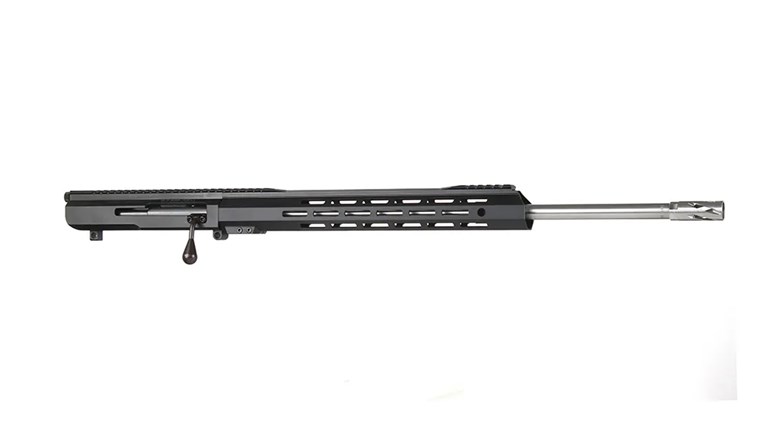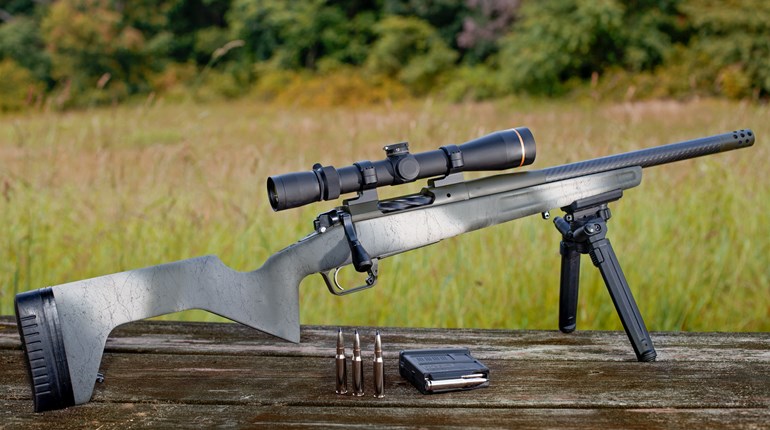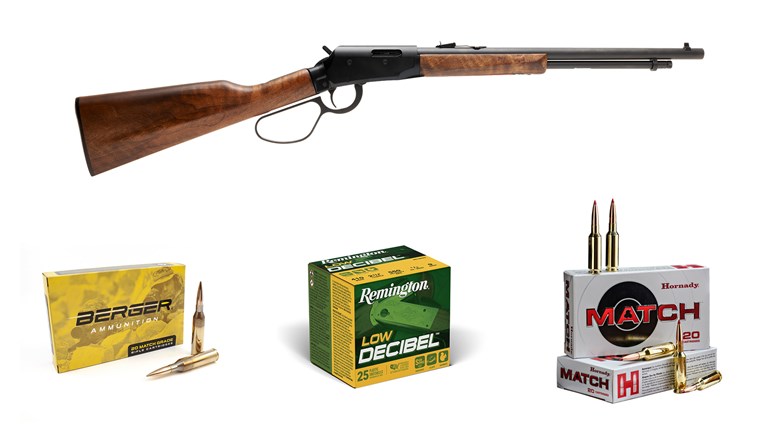
When I was five, my uncle let me shoot a pig—that he was going to butcher—using a Winchester Model 1890 .22 LR. I can still smell the smoke. While I shot right handed, my uncle (now GEN Richard C. Bendix, USA (ret.)), still shoots left handed. What impressed me was how he could work a right-handed bolt with his left hand. The same went for his ’94 Winchester .30-30 Win. carbine, where he could reload with the gate in place without having to lower the rifle from his shoulder. He could simply keep the rifle to his cheek and shoot-one-load-one. The same goes with the slide-action (pump) shotgun.
My long-time buddy Wiley Clapp also shoots left handed, and plays a right-handed 870 Remington like a violin from his left shoulder. I and others first witnessed this during a week-long shotgun class at Gunsite years ago. Clapp does the same thing my uncle did with a right-handed levergun. At the time, I wondered why firearm companies didn’t showcase that fact to their buyers. I still do, but it’s probably because lefties are only 10 percent of the population, or maybe because some of the people at the top aren’t gun people (how rare).
Thirty years ago, in a pitch-black shack in Montana with two rifle manufacturers on a buffalo hunt, we were talking about rifles when one of them mentioned they had made a left-handed, bolt-action rifle with right-hand ejection. I killed a buffalo for them, made it over the Big Horns in their plane and had that rifle a couple of weeks later. Those who shot that rifle loved the idea, but it was never produced.
As with just about anything you can think of, everything that goes out of vogue sooner or later becomes the latest thing by all those who never used it before—especially when they understand its utility and even more when they find a need. An example is the current rebirth of the bolt-action rifle. It is not just for hunting anymore; virtually every maker of bolt-action rifles is tacking every rail, bipod, polymer stock, detachable magazine and muzzle brake on their not-so-modern basic rifles, all with the bolts on the right side. Think about it.
You’re a right-handed SWAT cop in the middle of nowhere watching a shack at 200 yards where a bad actor is threatening to kill a girl he kidnapped. The fingers on your right hand are around the grip and your thumb is up on safe. Your left hand is under your buttstock, and your cheek is on the comb with right your eye behind your scope. Suddenly, the balloon goes up and you take the shot. You immediately go for your bolt to chamber another round. To do so, your finger comes off of the trigger, you remove your hand and grab your bolt handle as the butt comes away from your shoulder. Your eye comes away from the ocular lens as your right hand lifts the bolt and jerks it back to the end of the throw and starts forward to chamber a new round. After it does your right hand goes back around the stock, your finger goes down toward the trigger and your eye goes back on the ocular lens. The whole time, your left hand has stayed where it was, doing nothing while your heart and brain felt like they were going south. This time, you saved the girl, but how long did it take? I’m guessing 5 to 6 seconds if you’re on top of things. How much is a second worth?

So, you’re a semi-automatic-rifle guy and you don’t need any bolt-action rifle to fool with. That’s fine and you can stick with that while we look at the left-handed bolt rifle for righties. First off, that shooter would have moved nothing on the right side of the rifle. The left hand would have done everything. Moving from under the stock to the bolt, the rifle’s butt would have remained against the shoulder providing a sturdy base for the left hand to rapidly work the bolt and let the eye remain right behind the scope. The left hand would immediately return to where it was with the entire movement taking about 2 seconds. Again, how much is a second worth when stakes are that high?
This aside, not all left-handed bolt guns are equal—not anymore. There’s a new lefty on the block and it’s something the likes of which you’ve never seen. Called the Bellator (patent pending), it’s made by an old company with a new name, “21st Tec,” and it seems to combine the best of all worlds. The sample Bellator was in FDE color, but it’s also offered in black and what the company calls “Battle Worn.”
At first glance, the Bellator looks like a new variation of a large AR-style rifle with room for all the things one can mount on a rifle. It’s made of 6065 T6-aluminum alloy, and it has a folding stock, standard AR controls, an AR locking lower cross pin and magazine release. The Bellator will accept most AR-style pistol grips, has a full-length M1913 top rail and an M-Lok handguard that locks rigidly to the upper-receiver rail, a right-side ejection port, a threaded barrel with a changeable muzzle brake/suppressor mount and a detachable-box magazine. Oh yes, and a left-handed bolt.

What does it have that a semi-automatic AR doesn’t? Well, when there is a lull in shooting—like when one stops to move forward at a rifle range—retracting the bolt on the Bellator clears the chamber and stays to the rear. When the bolt pushes a cartridge forward, you know that it’s chambered. A semi-automatic AR builds up debris, especially when using a suppressor, allowing crud to get into the action. And then there’s that interesting folding stock (21st Tec is designing an improved one).

Except for the barrel, field stripping the Bellator’s three main components is accomplished in about 4 seconds without tools—really. We’re not just talking about the upper and lower receivers, but the magazine as well, and the double-stack, steel magazines can be had for a number of calibers, as can the dual bolt head.
The Bellator’s barrel is locked into the upper receiver by two hefty cross-bolts torqued at 65 ft.-lbs. using the precision tool furnished, a process that can be accomplished in about 4 minutes. The .338 Lapua Mag. barrel’s right-hand twist is 1:9.4 inches, while twist on the .300 Norma Mag. barrel is 1:9 inches. Using another furnished hex tool, the bolt handle’s retaining screw and bolt are quickly removed. This allows the bolt body to exit the upper receiver, from the rear where it can then be further disassembled without tools. The muzzle brake/suppressor mount on the rifle was KGM’s QD for its R338 suppressor, but Silencio suppressors are also stocked.
 Our sample Bellator was an early test rifle bearing serial number 23 and with it came two barrels and ammunition: .338 Lapua Mag. 250-grain FMJBT, SBR .338 Lapua Mag. 250-grain HPBT-SML and SBR’s 250-grain HPBT .300 Norma Mag. fodder.
Our sample Bellator was an early test rifle bearing serial number 23 and with it came two barrels and ammunition: .338 Lapua Mag. 250-grain FMJBT, SBR .338 Lapua Mag. 250-grain HPBT-SML and SBR’s 250-grain HPBT .300 Norma Mag. fodder.
Assembling an FDE 10X Leupold scope with an A.R.M.S. mount on the Bellator’s top rail, I impatiently waited for a semi-sunny Colorado day in February and met my friend, LT Ted Valerio (a crack shot) at Paul Miller’s police range in Montrose. There, we got on paper enough to put a few rounds of .338 Lapua Mag. downrange at 100 yards, and Valerio put five holes a hair inside of an inch before it started raining again.
Determined to get some time on the Bellator off of a heavy bench, I took it to our Montrose Gun Club where the firing line is fully covered on three sides. I had added a Magpul bipod in FDE, but I folded it and used a heavy rest on one of the club’s concrete benches to get the best accuracy. I waited for as good a day as it gets that time of year in Colorado, and I shot the Bellator between gusts of cold wind for more than an hour with both .338 Lapua Mag. and .300 Norma Mag. barrels, again at 100 yards. Each barrel had no trouble shooting MOA or better at 100 yards with most of the wind coming from behind. It was more fun to shove home the rounds and send them at full-size silhouette steel targets at 500 yards, where it seemed impossible to miss, followed by a nice clang!
I’ve been shooting .338 Lapua Mag. bolt- and semi-auto guns since 1994 and I’ve never minded the recoil, but I was surprised that the muzzle brake on the Bellator seemed more efficient than any I’ve shot previously. In addition to the .338 Lapua Mag. and .300 Norma Mag. calibers I received, the Bellator is offered in 6.5 Creedmoor and .308 Win., with other chamberings planned.
I came away impressed with the Bellator from 21st Tec. There’s nothing like it on the market right now.




































